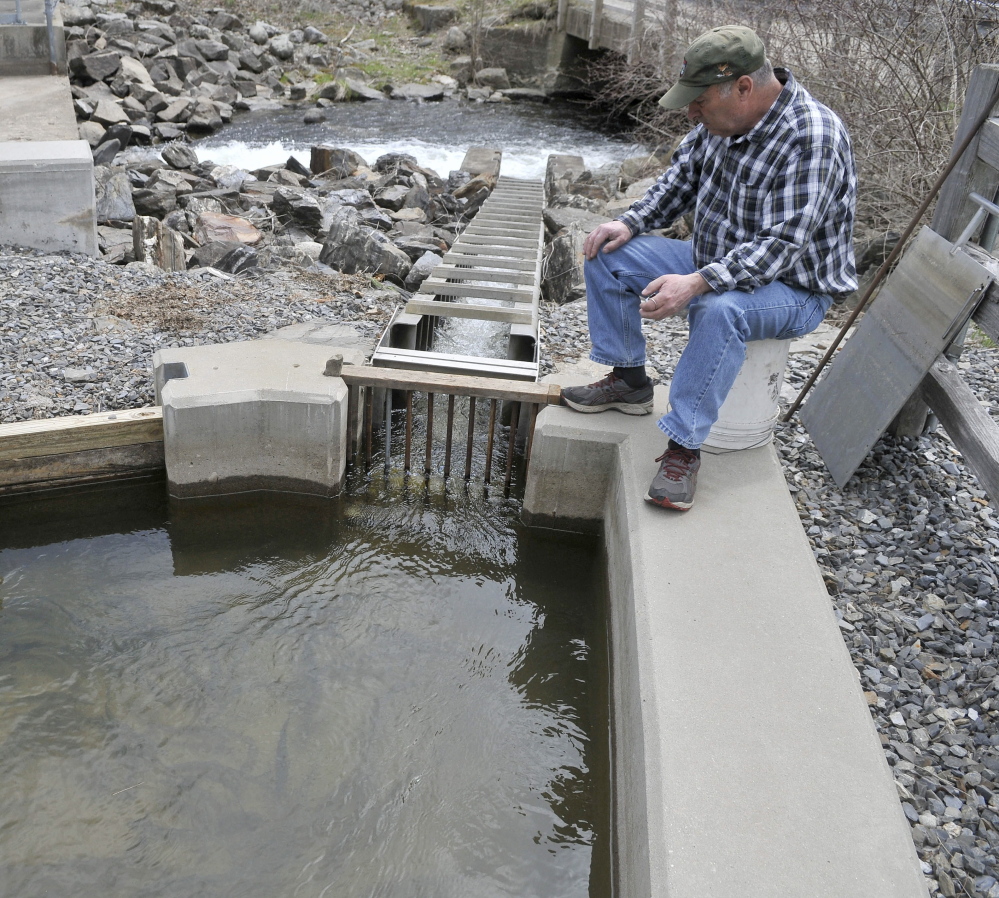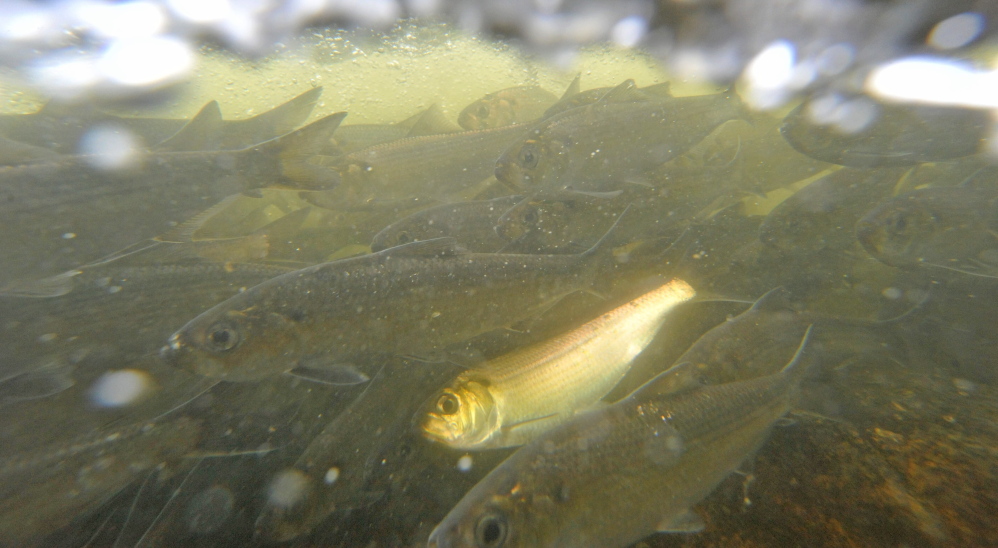Benton’s town leaders were concerned that their upcoming alewife festival might lack one essential ingredient: alewives.
Last year, millions of the foot-long silver fish began showing up in the Sebasticook River in numbers on April 29. This year, when they hadn’t yet shown up by May 7, organizers of the annual festival said they were worried, not least because they had sold more than 50 tickets to a May 16 alewife dinner that kicks off the festivities. Organizers rely on the presence of the fish in order to hand out free smoked alewives during the May 17 festival.
Benton Selectman Antoine Morin breathed a sigh of relief this week when the first few members of the migration finally began arriving in local waters.
“Mother Nature is a tricky thing,” Morin said, “and I know better than to go against her wisdom.”
The late arrival of the fish, which are heavily harvested for use as lobster bait, but can also be eaten, is likely because of colder water temperatures caused by the unusually harsh winter and cool spring, according to Craig King, who oversees alewife populations for the state Department of Marine Resources.
King said it’s the latest local run of alewives in at least eight years.
Now that the alewife run has begun, King said it will accelerate quickly. At Webber Pond on Seven Mile Stream in Vassalboro, he said he counted four fish Tuesday, 1,000 on Wednesday and more than 3,000 by midafternoon Friday.
LONG JOURNEY
The fish travel from the sea up waterways in a huge plug, trying to stick together to maximize their chances of survival while running a gantlet of hungry predators.
Observers say local wildlife is becoming increasingly attracted to the rich stream of protein flowing upriver. Kingfishers, eagles, ospreys, herons, minks, snapping turtles and otter can all be seen feasting on the fish during the run.
“For the environment, it’s a huge win,” said Jeffrey Pierce, president of the Alewife Harvesters of Maine. However, Pierce said the prevalence of predators raises new questions about wildlife management.
In 2011, a pair of seals followed the fish all the way up to Benton, from the Kennebec River into the Sebasticook. It’s unusual for seals to come so far upstream, but Pierce said growing populations have been congregating around the mouths of Maine’s largest rivers to take advantage of the bounty, which includes salmon and eels along with alewives.
“This year, there are 400, 500 seals there off Popham Beach,” he said. “They’re literally driving the alewives up onto the beaches. I’ve never seen that before.”
In addition to threatening the alewives themselves, he said, the seals also make it more difficult for haddock and cod, two valuable commodities that also eat the alewives, from returning to Maine’s coast.
Seals may be cute and popular, he said, but they’re “eating machines” and need a check in their population, which he said is hurting fish stocks. He suggests a small limited seal hunt to cull their numbers and prevent them from eating so many alewives.
Pierce said the alewife run may be starting late, but the number of fish he sees downstream indicates that there is a large, healthy population of alewives this year. He said the delayed run is no cause for alarm and that historical data show late runs happen from time to time.
Whether all the fish will make the journey up to Benton is debatable. If the water suddenly gets significantly warmer, some of the fish will give up and head back downstream, although no one knows exactly what temperatures will trigger that reaction in how many fish.
“No one can really tell in advance whether it’s going to mean less fish or not,” King said.
Speculating on the number of fish that will arrive in any given year has become a more popular pastime in Benton over the last several years.
ALEWIFE HARVESTING
A state-approved town ordinance makes it legal for Benton to harvest the fish once 225,000 have made it over the Benton Falls Dam, which is equipped with a $1 million fish elevator that passes the fish upstream to their native spawning grounds. The town typically harvests anywhere from 350,000 to 500,000 fish per year.
Alewive harvesting is regulated by the state, both mass harvesting by communities and individual fishermen, who can take up to 25 per day.
There is enough habitat to support a population of 5 million fish, according to Nate Gray, a biologist with the Department of Marine Resources who monitors the fish in Benton.
But the actual number that arrive each year has never approached 5 million, instead fluctuating with complex environmental factors.
When the 2011 run was a staggering 2.7 million fish, it seemed like a sign of even greater things to come, but 2012 had the worst run on record, 1.75 million fish. Last year, it increased again, to 2.3 million.
Matt Hongoltz-Hetling can be contacted at 861-9287 or at:
mhhetling@centralmaine.com
Twitter: @hh_matt
Send questions/comments to the editors.




Success. Please wait for the page to reload. If the page does not reload within 5 seconds, please refresh the page.
Enter your email and password to access comments.
Hi, to comment on stories you must . This profile is in addition to your subscription and website login.
Already have a commenting profile? .
Invalid username/password.
Please check your email to confirm and complete your registration.
Only subscribers are eligible to post comments. Please subscribe or login first for digital access. Here’s why.
Use the form below to reset your password. When you've submitted your account email, we will send an email with a reset code.